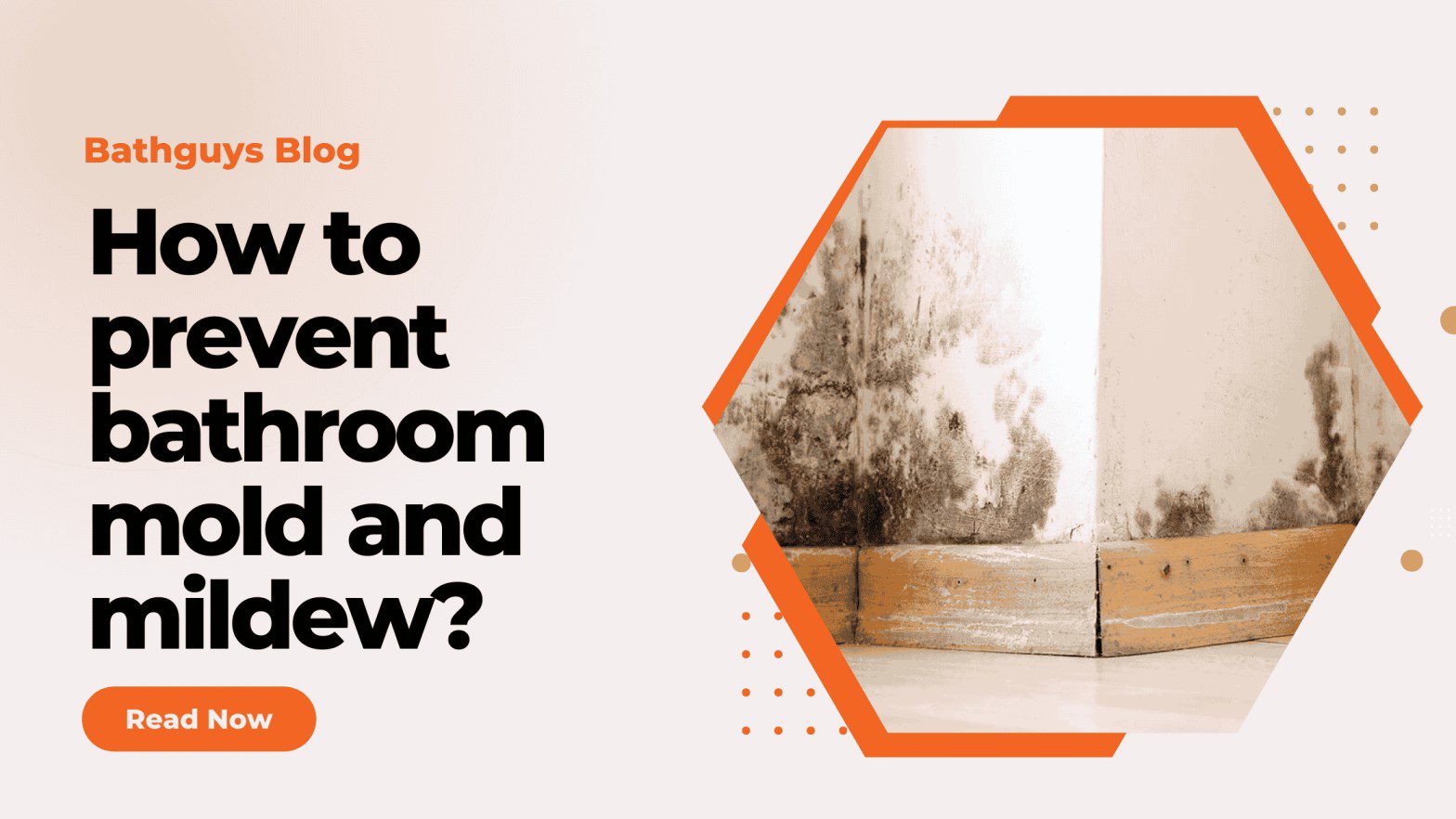How to Prevent Bathroom Mold and Mildew: Comprehensive Guide
Mold and mildew in the bathroom is a total pain, especially in a humid city like Toronto. No one wants to walk into a bathroom smelling of mildew, with discoloured walls or slippery surfaces from mold growth. If left unchecked, mold can not only damage your bathroom but also cause health issues like allergies and respiratory problems.
The good news? Preventing bathroom mold and mildew is easier than you think! With these strategies, you can keep your bathroom clean, fresh and mold free. In this post we’ll share our expert tips on how to stop mold before it starts and keep your space healthy for you and your family. Let’s get started!
Understanding Mold and Mildew
Mold and mildew are types of fungi that love damp, warm and poorly ventilated places – and your bathroom is the perfect breeding ground. While they look similar at first glance, there are key differences between the two. Mildew is a surface fungus that appears as white or gray patches on bathroom walls, shower tiles, ceilings and other damp surfaces. It’s easier to remove since it’s on the surface. Mold is darker in color, often green, black or brown and can penetrate deeper into porous surfaces and cause structural damage over time if left untreated.

Why do mold and mildew grow in bathrooms?
Bathrooms provide the perfect conditions for mold and mildew to grow due to:
- Excess moisture from daily activities like hot showers, baths and running sinks which creates a humid environment.
- Poor ventilation which traps moisture inside and prevents air circulation leading to prolonged dampness.
- Warm temperatures which allows fungal spores to spread rapidly and form colonies.
- Soap scum and organic matter like dead skin cells and leftover residues from personal care products which is food source for mold and mildew to grow.
The risks of mold and mildew in bathrooms
Ignoring the presence of mold and mildew in your bathroom can lead to:
- Health issues like allergies, asthma, respiratory infections and other respiratory problems especially in people with sensitivities or pre-existing conditions.
- Damage to bathroom surfaces like walls, tiles, grout, caulking and even wooden cabinets which can lead to costly repairs over time.
- Unpleasant odor which makes your bathroom feel unclean and unhygienic and creates an uncomfortable atmosphere for you and your guests.
Also Read: Top Bathroom Design Trends in Canada for 2025
Effective Prevention Strategies: How to Stop Bathroom Mold and Mildew
Keeping your bathroom clean, fresh and mold-free requires constant effort in controlling moisture and good ventilation. Since mold and mildew love damp, warm and poorly ventilated conditions, being proactive can make a big difference. By following these simple steps you can keep your bathroom fresh looking and smelling and prevent long term damage.

1. Ventilation
Good airflow is key to preventing excess humidity build up which is the perfect environment for mold and mildew to grow. Ventilation helps moisture escape reducing the chance of fungal growth.
- Use an exhaust fan: Run the exhaust fan during and after shower for at least 20 to 30 minutes to remove excess humidity from the air. If you don’t have an exhaust fan consider installing one to improve airflow.
- Open windows when you can: Let fresh air circulate by opening the windows to dry out the moisture left behind after bathing. Natural ventilation is one of the best way to reduce dampness in the bathroom.
- Leave the bathroom door open: After shower or bath keep the door open to let air flow in and out, so moisture doesn’t get trapped inside and condense on surfaces.
2. Minimize Moisture
Since mold loves wet conditions, controlling excess water accumulation is a must in preventing its growth. Keeping surfaces dry can make a big difference.
- Wipe down wet surfaces: Dry shower walls, mirrors, sinks and countertops after each use to remove lingering moisture that mold spores can latch onto. Using a squeegee or microfiber cloth makes this process easier and more effective.
- Fix leaks immediately: Dripping faucets, leaking pipes or water seepage from under sinks can create hidden pockets of moisture where mold can grow unnoticed. Regularly inspect plumbing fixtures and fix any leaks as soon as you detect them.
- Use a dehumidifier: If your bathroom lacks good ventilation or prone to excessive moisture, consider investing in a small bathroom friendly dehumidifier to keep humidity levels in check and prevent mold growth.
3. Use Mold-Resistant Materials
Adding mold-resistant materials to your bathroom can make a big difference in preventing mold and mildew. Moisture-resistant products will keep your bathroom cleaner for longer.
- Use mold-resistant paint: Anti-microbial and mold-resistant paints have additives that inhibit mold spores growth, perfect for bathroom walls and ceilings.
- Choose moisture-resistant drywall: Instead of regular drywall, use green board or cement board, these are designed to withstand moisture and prevent mold growth.
- Non-porous surfaces: Glass shower doors, ceramic tiles and stone countertops reduce the chance of mold accumulation since these materials don’t absorb moisture like wood or fabric-based materials.
4. Clean Your Bathroom
Cleaning is one of the best ways to prevent mold and mildew. Regular maintenance helps eliminate mold spores before they multiply.
- Scrub grout and tiles weekly: Use a natural cleaning solution like vinegar, baking soda or hydrogen peroxide to remove mold and prevent buildup in grout lines and between tiles. A soft-bristled brush works well for scrubbing.
- Wash shower curtains and bath mats frequently: Shower curtains, bath mats and towels trap moisture making them perfect places for mold and mildew. Wash them in hot water at least once a week to prevent mold from spreading.
- Declutter your bathroom: Reduce the number of items in your bathroom, like bottles, sponges and loofahs, as these are places where moisture can accumulate. Store only essential items and wipe down surfaces regularly.
5. Seal Grout and Caulking
Damaged or cracked grout and loose caulking around sinks, bathtubs and showers can trap water, giving mold a place to grow. Maintaining these areas will prevent long term water damage.
- Re-seal grout annually: Over time grout becomes porous and absorbs moisture, allowing mold to settle in. Apply a good quality grout sealer once a year to prevent water from seeping into tile gaps and reduce mold risk.
- Replace caulking: If caulking around your tub, sink or shower is deteriorating or has mold stains, replace it with new mold-resistant caulking.
Also Read: How to Improve Bathroom Ventilation Naturally in 2025
Identifying and Addressing Problem Areas
Even with precautions, bathroom mold and mildew can still pop up in hidden or hard to reach areas. Identifying these problem spots early prevents further damage and health risks. Here’s how to find and fix mold prone areas in your bathroom.
1. Check High Moisture Areas
Some areas in your bathroom hold more moisture than others, making them mold breeding grounds. Check these areas regularly:
- Shower and bathtub corners: Soap scum and water buildup is a mold perfect storm.
- Under the sink and around plumbing: Leaks or condensation under vanities can go unseen.
- Ceilings and walls: Poor ventilation leads to mold patches on painted surfaces.
- Grout lines and caulking: Mold loves porous materials that absorb moisture.
2. Look for Warning Signs
Mold doesn’t always show up as big, visible patches. Be on the lookout for these indicators:
- Musty smell: A lingering damp smell is a big sign of hidden mold.
- Discoloration on walls or tiles: Dark spots, greenish stains or peeling paint could be mold growth.
- Allergic reactions: If you or your family experience sneezing, coughing or itchy eyes in the bathroom, mold might be the culprit.
3. Fix the Root Cause
Once you find mold prone areas, take action to stop the spread:
- Fix leaks immediately: A dripping faucet or slow plumbing leak can lead to a lot of mold growth.
- Improve ventilation: If mold keeps coming back, increase airflow with an exhaust fan or dehumidifier.
- Reapply mold resistant paint: If walls keep showing mold stains, a fresh coat of anti-microbial paint can help.
- Deep clean affected areas: Scrub moldy grout, tiles and caulking with natural or chemical solutions (which we’ll get into next).
Conclusion
Mold and mildew to be prevented in bathroom for clean, healthy and long lasting bathroom. Improve ventilation, reduce moisture, use mold resistant materials, can lower down the chances of mold growth. Regular cleaning, prompt leak repairs and grout sealing also plays a big role in keeping bathroom fresh and mold free. If mold appears, address it quickly with natural or chemical solution to prevent further spread. Be proactive and your bathroom will be safe and comfortable for years to come.
Frequently Asked Questions (FAQs)
1. What causes mold and mildew to grow in bathrooms?
Mold and mildew thrive in bathrooms due to high humidity, poor ventilation, and excess moisture. Warm temperatures, steam from showers, and water buildup on surfaces create the perfect environment for mold spores to grow and spread.
2. How can I prevent mold from growing in my bathroom?
To prevent bathroom mold and mildew, improve ventilation by using an exhaust fan, wipe down wet surfaces, fix leaks promptly, and clean grout and tiles regularly. Using mold-resistant materials and dehumidifiers can also help keep your bathroom mold-free.
3. What is the best natural way to remove bathroom mold?
A mixture of white vinegar and baking soda is an effective natural solution for removing mold. Spray vinegar directly onto the affected area, let it sit for an hour, then scrub with a brush and rinse. This method kills mold without the use of harsh chemicals.
4. Can bathroom mold be harmful to health?
Yes, prolonged exposure to bathroom mold and mildew can cause health issues such as allergies, respiratory problems, skin irritation, and asthma flare-ups. It’s important to remove mold as soon as you spot it to protect your health.
5. How often should I clean my bathroom to prevent mold?
It’s best to clean your bathroom at least once a week to prevent mold buildup. Scrubbing grout, wiping down surfaces, and washing bath mats and shower curtains regularly will help keep mold and mildew from forming.





